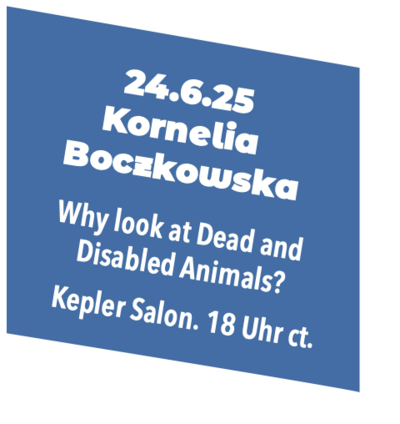Welcome at the Interface Culture program website.
Acting as creative artists and researchers, students learn how to advance the state of the art of current interface technologies and applications. Through interdisciplinary research and team work, they also develop new aspects of interface design including its cultural and social applications. The themes elaborated under the Master's programme in relation to interactive technologies include Interactive Environments, Interactive Art, Ubiquitous Computing, game design, VR and MR environments, Sound Art, Media Art, Web-Art, Software Art, HCI research and interaction design.

The Interface Culture program at the Linz University of Arts Department of Media was founded in 2004 by Christa Sommerer and Laurent Mignonneau. The program teaches students of human-machine interaction to develop innovative interfaces that harness new interface technologies at the confluence of art, research, application and design, and to investigate the cultural and social possibilities of implementing them.
The term "interface" is omnipresent nowadays. Basically, it describes an intersection or linkage between different computer systems that makes use of hardware components and software programs to enable the exchange and transmission of digital information via communications protocols.
However, an interface also describes the hook-up between human and machine, whereby the human qua user undertakes interaction as a means of operating and influencing the software and hardware components of a digital system. An interface thus enables human beings to communicate with digital technologies as well as to generate, receive and exchange data. Examples of interfaces in very widespread use are the mouse-keyboard interface and graphical user interfaces (i.e. desktop metaphors). In recent years, though, we have witnessed rapid developments in the direction of more intuitive and more seamless interface designs; the fields of research that have emerged include ubiquitous computing, intelligent environments, tangible user interfaces, auditory interfaces, VR-based and MR-based interaction, multi-modal interaction (camera-based interaction, voice-driven interaction, gesture-based interaction), robotic interfaces, natural interfaces and artistic and metaphoric interfaces.
Artists in the field of interactive art have been conducting research on human-machine interaction for a number of years now. By means of artistic, intuitive, conceptual, social and critical forms of interaction design, they have shown how digital processes can become essential elements of the artistic process.
Ars Electronica and in particular the Prix Ars Electronica's Interactive Art category launched in 1991 has had a powerful impact on this dialog and played an active role in promoting ongoing development in this field of research.
The Interface Cultures program is based upon this know-how. It is an artistic-scientific course of study to give budding media artists and media theoreticians solid training in creative and innovative interface design. Artistic design in these areas includes interactive art, netart, software art, robotic art, soundart, noiseart, games & storytelling and mobile art, as well as new hybrid fields like genetic art, bioart, spaceart and nanoart.
It is precisely this combination of technical know-how, interdisciplinary research and a creative artistic-scientific approach to a task that makes it possible to develop new, creative interfaces that engender progressive and innovative artistic-creative applications for media art, media design, media research and communication.
Why look at Dead and Disabled Animals?
24. Juni 2025, 18.00 Uhr
Vortrag von Kornelia Boczkowska im Rahmen der Reihe relatifs.
From Thomas Edison’s infamous Electrocuting an Elephant until a recent surge of images of “animal crips” in social media, scenes involving dead, dying and disabled animals have proliferated on the screen since the beginnings of cinema, raising questions of anthropocentrism, animal, food and care ethics, animal suffering and welfare, violence and animal rights. However, while there are scarce accounts on how fictional narrative and documentary films capture the moment of animal death and how disabled animals function in social media, little is known about how dead animals and animals with physical limitations are represented in experimental film.
To address this question, Kornelia Boczkowska will discuss how experimental films bring in a dead and disabled animal viewpoint, shedding light on how avant-garde cinema de-animalizes and conveys a palpable experience of the suffering animal, which contrasts a more traditional representation of dead and disabled animals as commodified, fetishized, victimized and pitiable objects, often physically marginalized and devoid of their material bodies.
Kornelia Boczkowska ist Assistant Professor an der Adam Mickiewicz Universität, Poznań, Polen, Fakultät für Englisch. Ihre Forschungsinteressen liegen im Bereich des amerikanischen Avantgarde-Films. Ihr aktuelles Buch, Lost Highways, Embodied Travels (Brill, 2023), ist die erste ausführliche Studie zum Verhältnis von Road Movie und Experimentalfilm.
Die Veranstaltungsreihe wird von Anne von der Heiden, Henning Engelke (Kunstuniversität Linz, Kunstgeschichte und Kunsttheorie) und Julia Grillmayr (Kunstuniversität Linz, Kulturwissenschaft) und dem Kepler Salon Linz ausgerichtet.
TERMINE IM SOMMERSEMESTER 2025
ABGESAGT 08.04.2025
Heike Behrend: Menschwerdung eines Affen
20.05.2025
Mieke Bal: Doubt is the most effective way of thinking
27.05.2025
Ute Hörner: Parrot Terristories: Eine Multispezies Erzählung
24.06.2025
Kornelia Boczkowska: Why look at Dead and Disabled Animals?
